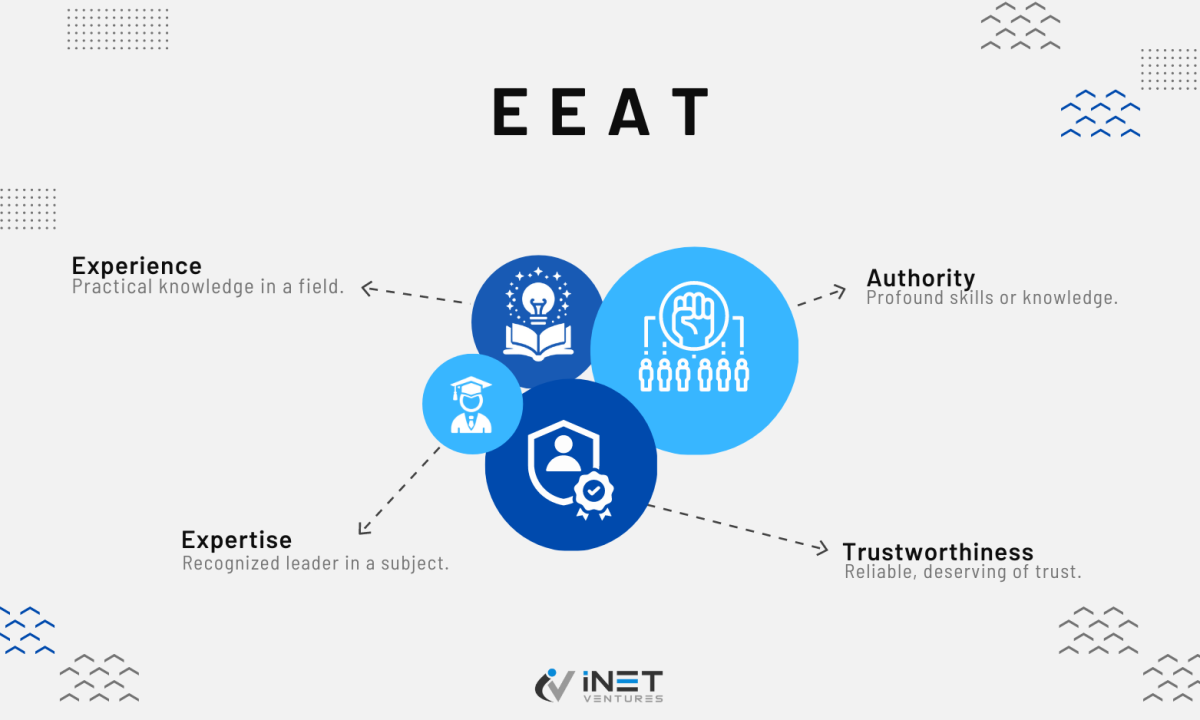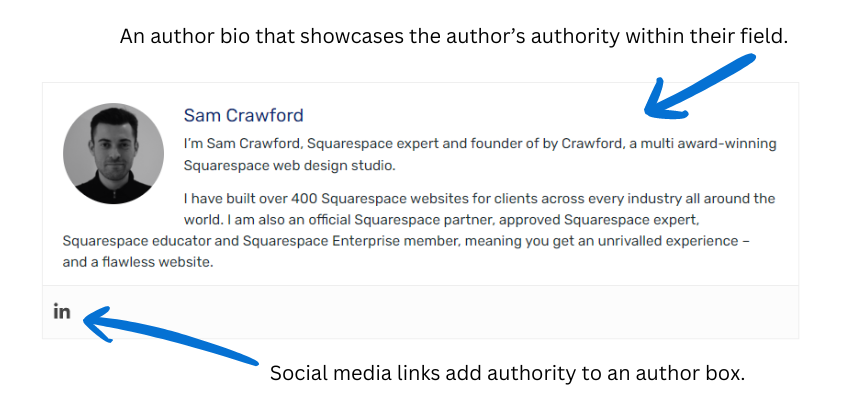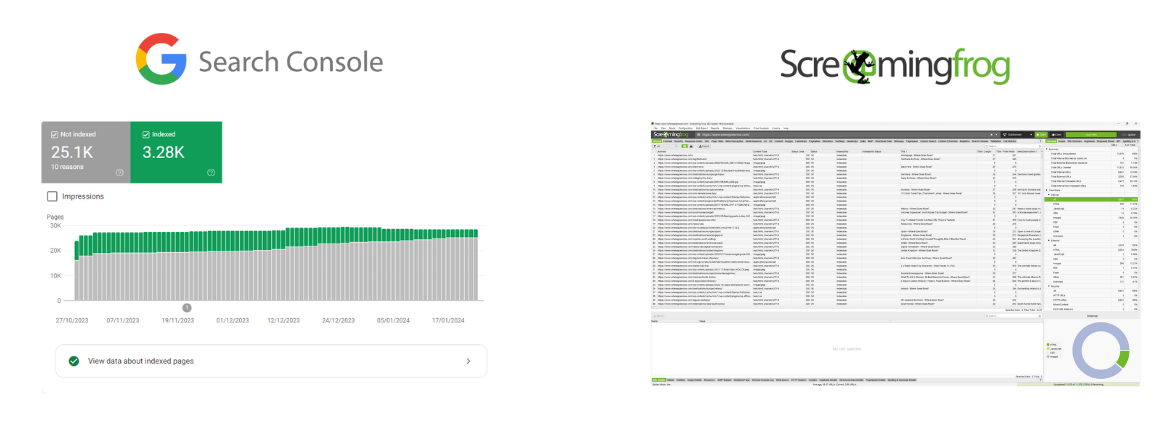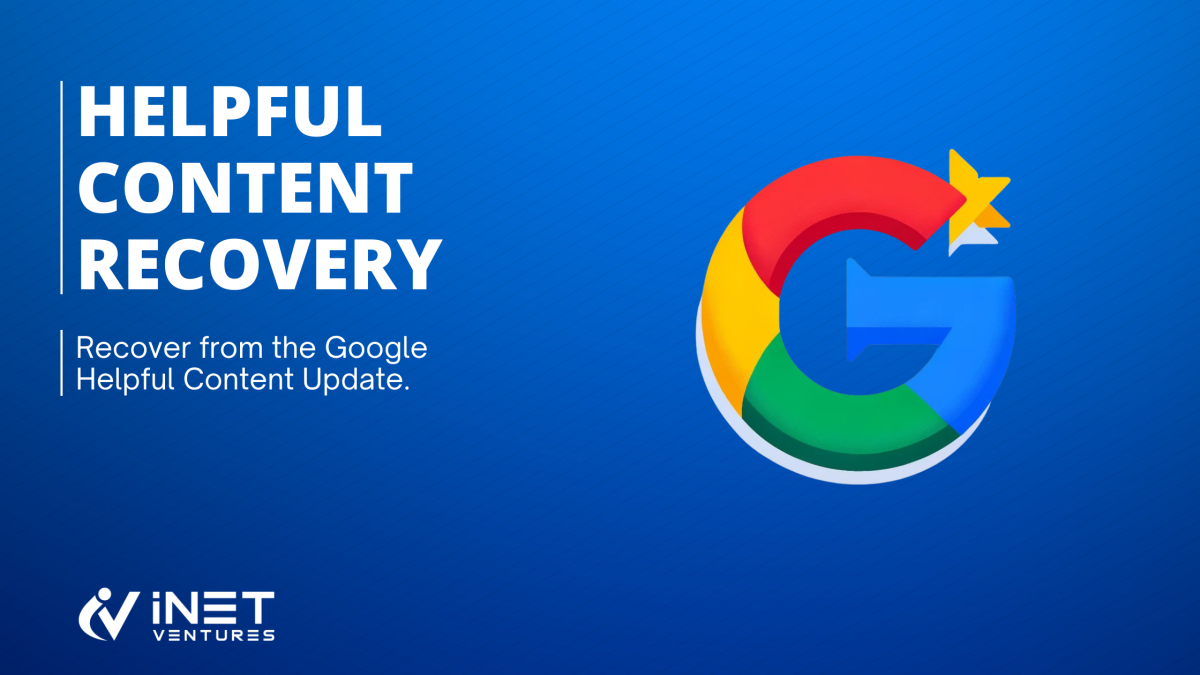Whenever Google rolls out a new “helpful content” update, website owners around the world cross their fingers and hope that nothing will go too wrong this time.
With that said, you may have noticed a seemingly random change in your website’s traffic late last year, and maybe even a drastic dip in visitors. While you may try to look at things you have done, this traffic change could be an effect of Google’s Helpful Content September 2023 Update.
Murmurings of a second update to Google’s Helpful Content System were heard throughout 2023, so it was no surprise when Google announced the update, which was finally implemented at the end of September. This update used new criteria to evaluate websites, prizing value and reliability over keywords and SEO tactics.
If you have been affected by Google’s last update, you might be worried that the drop in SERPs is permanent. With many sites affected, you’ll need to do the following to recover. Read on.
What is Google’s Helpful Content System?
Until Google changed things up last year, SEO and keywords seemed like the most important things to consider when creating content. Everyone was stuffing their content with as many keywords as they could, to the point it was often quantity over quality. This was considered so important that the amount of keywords on a page was often valued more than the content itself, which was greatly frustrating for users reading them.
Including as many keywords as possible is something often seen in AI-generated content. It often saturates content with these relevant words to the point that it is definitely quantity over quality.
One important part of this helpful content system is the concept of EEAT. This stands for ‘Experience, Expertise, Authoritativeness, Trustworthiness.’ These are used by people at Google, known as ‘search raters.’ Their job is to look at how well the search engine is performing, rather than directly influencing rating. They are an important framework provided by Google to help understand how they evaluate sites, so it is worth spending some time getting to grips with what they mean.

👁️ Experience
Let’s begin with the first ‘E’.’ This stands for Experience, as Google now values personal accounts and experiences in its content. For instance, if you are reading about a city break, is it written by someone who has actually visited and is talking from personal experience? If you are looking for a product review, has the reviewer actually used the product themselves?
🎓 Expertise
Expertise is what you would expect. If you are reading about how to plumb in a new sink, you would like to think the person explaining how has actually done this many times and is somewhat of an expert. You probably don’t want someone who has never done it before rehashing unverified information as their own, especially when your home is involved. Google now agrees with you, and expertise is a prized attribute.
👑 Authoritativeness
When it comes to Authoritativeness, this refers to the reputation you and your website have within the industry you are writing about. Authors who are experts or professionals within their field add authority to your website, as well as other sites linking back as a reputable source of information.
🛡️ Trustworthiness
Trustworthiness is perhaps the most important element of EEAT as it takes all of the above into consideration. This looks at who wrote the article, whether it is factually correct, and trustworthy sources of information.
Google decided to make some drastic changes to how it evaluates sites and how it subsequently ranks them using this EEAT system. This process seeks to improve the rankings of well-written informative sites over those that rely on SEO tactics and keyword placement.
The first update was carried out in August 2022 and it reassessed all websites to ascertain the quality of their content. Websites lacking any real relevant information found their rankings lowered and their traffic suffered.
What about the March 2024 update?
Yet another Google update is in the process of being implemented as of March 2024, and it’s another humdinger, sure to impact the performance of many websites.
This update is intended to reduce “low-quality, unoriginal results” on Google, which means that sites scraping other platforms, including social media, for content should be obliterated by this update.
Google is also looking to target spammy sites, as well as sites that use automation to scale content, with or without human intervention. Those that have used AI to produce mass-spam content have also typically disappeared totally from SERPs.
Other targets for this update include websites that host “low-quality content provided by third parties”, with a view to artificially boosting the profile of those third parties by including their links on more reputable sites.
In addition, website owners using expired domain exploits to boost low-quality search rankings – i.e., those who purchase expired domains to push their own content, thus duping users into thinking those domains are hosting that new content – are being targeted by this update.
Many blogs crashed. Getting in the top few search results got harder. Google is now prioritising Reddit and Youtube for many search queries. Big platforms like LinkedIn are also currently ranking well in terms of their blog posts (this will probably change, as plenty of spam is published on there). Authority authors typically will be ranking better too.
James Allsopp
What Did the September 2023 Update Do?
The big update was a long time coming, and everyone pretty much knew we wouldn’t finish 2023 without a sizeable change to the helpful content system. So it was no surprise when the update began on September 14th, taking two weeks to finally complete on September 28th.
Over these two weeks, Google assessed websites using updated criteria to raise the rankings of informative websites over those written purely with SEO in mind. Once it had finished, many websites found their rankings lowered and subsequently suffered a drop in traffic as a result. Many sites experienced a crash in rankings, as is perfectly demonstrated by the data below.

Some niches suffered worse than others. We’ve collected 1000s of examples. Websites in the gaming and tech niche were heavily affected, generally because this niche is more likely to have spammy content – Google went after it harder. Health was another topic that the update was not kind to – with a heightened need for authority. E-commerce sites were generally left alone and didn’t see any major issues.
What Has Changed?
Google has released a good amount of information about the September update and how it works, so we aren’t completely in the dark. We’ve also analyzed many sites to have an understanding of what works and what doesn’t. The main focus of the update is to put sites that offer authentic, quality information at the top of the search results, and to stop websites that are relying solely on SEO tactics, or provide little value, from being at the top.
Should you use AI to produce content?
Many website owners ask the question: Does Google penalize AI-generated content? The simple answer is no.
Google has acknowledged that there is a place in the world of website content for AI. However, mass-producing AI content is a big no. When used responsibly, and humanly checked, AI Content is considered fine by Google.
This is often a battle both to improve the quality of writing AI produces and to improve the accuracy with which AI detectors can detect non-human-produced content.
It’s important to remember – AI content, typically produced by Google Bard or Chat GPT, is often written with factual inaccuracies and doesn’t contain human emotion or authority from an expert. One of the main requirements of Google’s Helpful Content System is that content typically connects with audiences better, which is why human content is often better. Therefore, lots of sites written completely by AI found themselves a penalty after the March Update.
Thus, if you want to use AI for your lead page and you check the accuracies, you should be fine. Pumping out blog posts from AI is a no-go area unless checked by an expert from the niche discussed.
Who Was Most Affected?
If you write well-researched, informative content with a specific audience in mind, you have probably noticed any change in traffic after the Google Helpful Content Update in September. According to Google, the update focuses primarily on educational sites, entertainment, shopping, and technology.
Although these sites generally suffered the most, all sites were evaluated, and there were some general trends that emerged:
- 📝 Long Introductions – Recipes and articles with long, meandering introductions before the relevant information.
- 🚫 Broken Links – Old pages with links that didn’t work.
- 🕵️♂️ Misleading Links – Including links claiming to be more content but was an ad.
- 🚫 Intrusive Pop-Ups – Too many intrusive pop-ups.
- 📝 Short Articles – Short articles that didn’t offer any depth or expertise.
- 🤷♂️ Lack of Author Authority – Lack of author authority with published content.
If you write a blog, you may think that these updated criteria may not value your content. However, Google does not penalize blogs in general; you will be glad to hear! As long as your writing seeks to inform a specific reader, you shouldn’t find you have a problem.
This is also true of websites that contain a high number of ads. You might think these sites would be penalized, but this doesn’t seem to be the case. Content is key here, and the amount of ads doesn’t seem to have a direct impact. Great news if you rely heavily on ads to generate revenue.
You can check if your website has received an official penalty by going to the Google Search Console.

If your site is wellness-based, be extra-vigilant
Several bloggers and SEO sites have noted that those who have wellness-based sites or health blogs have been hit particularly hard by the last helpful content update.
If your site contains promotions for products and you’re making claims about the health benefits those products may have (or, indeed, the health drawbacks that other products could have), then make sure you’re vetting those claims.
Google is desperately trying to get rid of false and erroneous information from its search engine rankings, and if your site contains any degree of dubious information that hasn’t been verified by authoritative peers, you could be in trouble.
Expertise is one of the biggest factors in a page ranking on Google, and when a site promotes untrustworthy claims that can’t be verified by independent forces, that site’s expertise falls dramatically.
Make sure your ads are integrated tastefully
There’s nothing worse than landing on a website and immediately seeing a massive ad that covers half of the page.
This is especially true when it’s not possible to easily dismiss the ad; the content you came to read is now covered completely by the ad, and there’s no way to get rid of it.
Where possible, optimise your site for UX rather than ad placement. Google wants to see that your site is useful and that you’re not just trying to squeeze the maximum amount of revenue out of your readers.
You can refer to Google’s Page Experience guidelines if you want to know the best way to build a page.
How can I recover?
If you have noticed a marked decrease in traffic since the update, don’t panic, as there are some steps and actions you can take to restore your website to what it once was.
The first step is to acquaint yourself with the criteria above as well as the tips published by Google (LINK). Once you understand what Google is looking for, you should begin by self-assessing your website. Any low-value content should simply be removed. Other content can be updated to help improve your website’s ranking.
When assessing and producing new content, you should focus on the following set of criteria.
| Strategy | Description |
|---|---|
| 👥 Prioritize User Experience | Ensure your website is user-friendly, with easy navigation and fast loading times. |
| 🔍 Focus on Original Research | Create content based on unique insights, studies, or analyses. |
| 📚 Enhance Content Depth | Provide comprehensive and in-depth information on your topics. |
| 📖 Improve Content Readability | Make sure your content is well-written and easy to understand. |
| 📱 Optimize for Mobile Users | Ensure your website is fully responsive and mobile-friendly. |
| 🔗 Strengthen Internal Linking | Use internal links wisely to keep users engaged and reduce bounce rates. |
| 🔄 Update and Refresh Old Content | Regularly update your content to keep it relevant and fresh. |
| 🎓 Showcase Author Expertise | Highlight the qualifications and expertise of your content creators. |
| 💬 Promote User Engagement | Encourage comments, shares, and interaction on your platform. |
| 📈 Implement Structured Data | Use schema markup to help search engines understand and display your content effectively. |
| 👑 Focus on E-E-A-T | Align your content with Google’s E-E-A-T guidelines. |
| 🎯 Address User Intent | Ensure your content thoroughly answers the questions your audience is asking. |
| 🌐 Diversify Content Formats | Use various content types like videos, infographics, and podcasts to engage different audiences. |
| 📊 Monitor Performance Metrics | Regularly check analytics to understand what works and what doesn’t. |
| 🤖 Adapt to AI and Machine Learning | Stay updated with how AI and machine learning can impact SEO and content creation. |
Write with a specific reader in mind
One of the easiest ways to improve your ranking is to write your content with a specific person in mind. Consider WHO they are, WHY they are asking the question or looking for the information, and WHAT they can learn. It may be necessary to rewrite and update existing content to make sure it isn’t just aimed at an unknown generic reader.
Write for humans
If you and your writers are still constructing content that’s essentially built for SEO robots to enjoy, then it’s time to rethink your strategy.
Google, ironically, values content that’s written for humans (even though it uses algorithms to comb for that content).
As such, you should be writing content that’s intended for humans to consume, which means not overusing SEO terms artificially. If you can find a way to incorporate those terms organically, that’s great, but your content shouldn’t come across like it’s written for robots.
Again, it all comes down to whether content is “helpful” or not. A user doesn’t want to read endlessly repeated SEO terms; they want to read content that will help them to do or understand something.
Aim to inform in detail and with expertise
Google values content that seeks to delve DEEPLY into topics, rather than those that just give a very brief overview of a topic. Think about why your reader is here, and will your article help educate and inform them on the topic to a decent level. Don’t fluff content to increase word count – cover the topic and be straight to the point.
Following on from the previous point, Google’s Helpful Content System values authorship when assessing content.
It should be clear who wrote the article and what expertise they may have. This will help Google to know that your content is correct and authentic, while still being informative.

This may be as simple as adding an author by-line to each page and linking them to other work they have published. Including an author box is also a good idea, that’s if the author is writing about something they are an expert in. Including social media links further boosts the authority.
Don’t get caught up with keywords
As already discussed, stuffing your content full with as many keywords as you can will no longer cut it, I’m afraid! This is not to say that keywords are now obsolete; there is definitely still a place for them and they still hold some value.
However, if you are going to include them, make sure they appear in an organic way and make sense in the flow of the writing. We have all read things online and been able to spot the prerequisite keywords as they sound out of joint and clunky against everything else.
If you are worried that you are unable to make them sound natural, air on the side of caution and leave them out. If your writing is informative and relevant, it will still have a good rating without awkwardly placed keywords.
Use images, visuals and interactable elements
It is no secret that including multimedia in your writing will help improve its value and, subsequently, its rating. Visuals help reinforce your content and make it seem more reliable.
It isn’t just photos and images you should consider including. Relevant podcasts, videos, graphs, polls, trivia, FAQs, and tables can also help add weight to your writing and user experience.
Ask yourself: How can I get a user to remain on the page and interested in the content?
Google has the ability to understand how long a user interacts with the pages on your website. Thus, keep them entertained.
Use Your Metrics (sparingly!)
Reading each page and self-assessing is the best way to ensure your content is valuable and meets Google’s EEAT criteria. However, you can also supplement this with some careful use of your website’s metrics. This is easy for smaller sites, but the same can’t be said for sites hosting lots of written content.

Useful Tip: Use tools such as Google Search Console and ScreamingFrog to help you find posts that aren’t receiving any impressions – consider updating such posts or removing them (and forwarding to category or another post).
I’d strongly advise the following actions:
- Run the site through Screaming Frog and connect it to GSC.
- From this – you’ll have all URLs and be able to see which have had few impressions.
- Then, isolate the pages that look suspiciously low on impressions and QC them as though you’re a Google ‘Search Rater.’
- Also, isolate pages that look ‘off topic’ or cover topics in a very poor/non-comprehensive way.
Next, create a to-do list on a per-page basis of:
- Delete and 301
- Delete and 404 (malicious off-topic guest posts)
- Update
- Promote / Make-Sticky
- Do nothing (the page is fine)
With Google Analytics (or whichever analytics you use), one key metric to look at is the bounce rate. This will give you an indication of whether users are finding your content useful or are going elsewhere to find what they need. Understanding user engagement is crucial.
Also, pay attention to the average session duration as well as pages viewed per session. These metrics can offer insights into how engaging and relevant your content is to your audience.
Remember, it can be easy to get caught up in metrics and figures. While they are useful tools to help you understand how your website is being received, especially if you are trying to recover from the update, you should focus on the actual content first.
How Long Will My Site Take to Recover?
Considering the Update only took two weeks to complete, your website’s rating may have taken a hit in what seems like overnight. Although it happened in a snap, it can take weeks (or even months!) for your website to fully recover even if you do everything we have described.
The sad reality is that it can take months to recover, even if you carry out all the steps above. Google’s Helpful Content System is a continuous process, with them constantly evaluating the value of content.
I recommend watching the following video by Jesse Cunningham, where he explores why some sites beat the Google Helpful Content Update. 📹👀
Conclusion
The Google Helpful Content September 2023 Update ruffled feathers across the web, and many good websites found themselves in trouble when it came to search engine traffic. So, if you suffered a hit as a result of this update, you are in good company.
Luckily, all is not lost, and you can make a comeback from this knock. If you carefully self-assess your website, you can then follow our steps to help restore your website to its former glory. Don’t forget to continue with link building, too, as this is as important as ever.
Got any questions? Feel free to contact us for tips and advice.
Trivia: Test Your Knowlege
As the founder of iNet Ventures, James deeply understands the world of SEO, link building, growth, and strategy. After achieving remarkable results for agencies and websites, his approach combines industry knowledge with forward-thinking tactics, which embark on analytical tools and AI.


